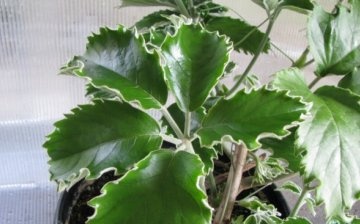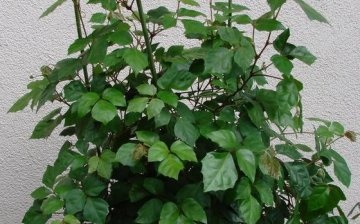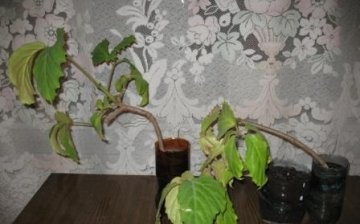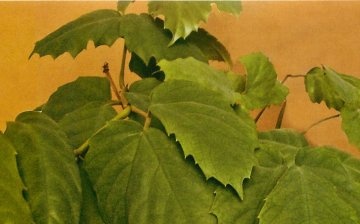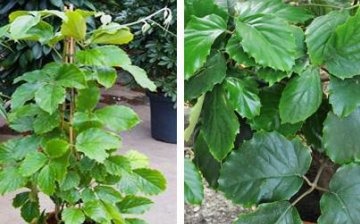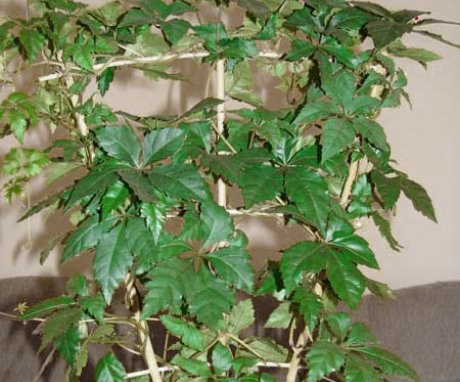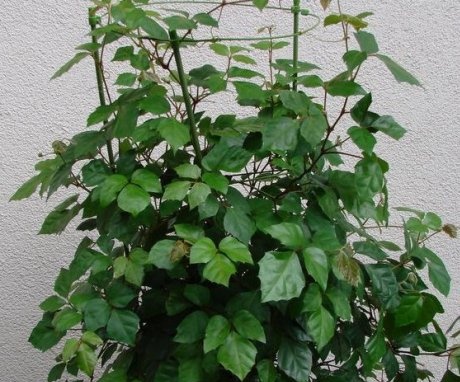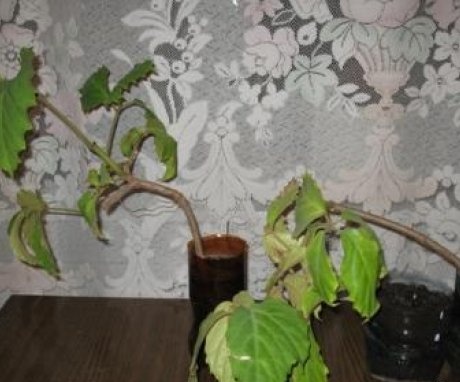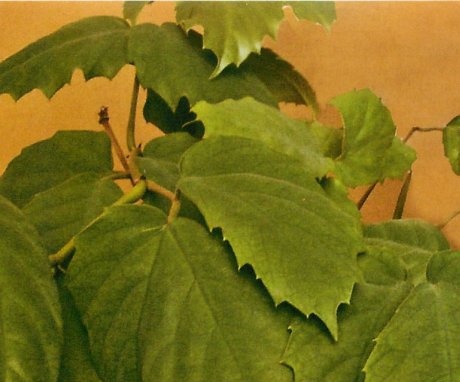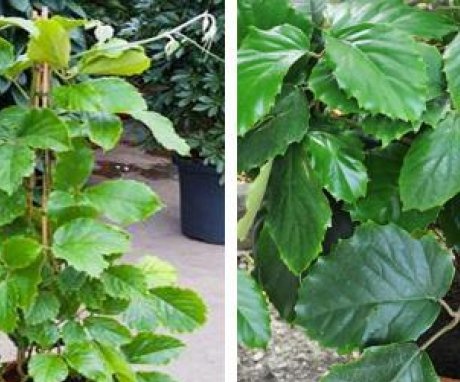Tetrastigma vuigne: description, agricultural technology and application of the plant
Tetrastigma is a perennial vine that belongs to the Grape family. There are more than 90 species of this plant, but most often it is the Vuanye tetrastigma that is used in the gardening of premises. Content:
- Description of tetrastigma voigne
- Caring for tetrastigma voigne
- Reproduction of tetrastigma voigne
- Plant diseases and pests
- Application of tetrastigma voigne
Description of tetrastigma voigne
The branches of this vine in natural conditions grow by 50 meters, adding 200 cm each year. Its leaves are large, leathery, and consist of five separate fingers, which are oblong-oval or rhombic in shape. They are painted in a dark green color, which is covered with rusty pubescence from the bottom. Young stems and leaves also have pubescence - small silvery hairs.
In lianas, the old parts of the branches become stiff, but they still remain flexible and cannot hold the entire crown on themselves.
Therefore, such a plant needs a support along which the branches will climb up. Many tendrils grow on the branches, thanks to which the plant clings to any nearby object and reaches for the light.
Tetrastigma blooms only in natural conditions. The buds are located high in the crowns of trees, along which the liana curled. The flowers are small, painted in a greenish tint.
Caring for tetrastigma voigne
In order for the tetrastigma to develop well, it must be planted in a large tub. It is best to choose a place for placement that is light, shaded from direct sunlight, otherwise burns may appear on the foliage.
In order for the plant not to shed its leaves, the light must come in within 12 hours.
The branches of the tetrasigma grow quickly, so you need to keep an eye on them and curl them on artificial trellises or any other devices. If this is not done in a short time, she will curl all nearby plants or objects, but this is subject to good care of her. In small rooms, vines grow up to 2-5 meters, in hallways and office halls, such a plant can stretch its branches up to 10-12 meters.
Plant temperature:
- Since the plant comes from warm places, the temperature also prefers high + 25- + 28 degrees. But even at lower temperatures, tetrastigma will develop normally.
- If the temperature drops below +10 degrees, then its growth slows down or stops altogether. Leaves may also begin to fall off.
The soil should be chosen loose and sandy. You can make it yourself by mixing soil from the garden with soil from rotting leaves and a small part of the sand. It is also good to add some compost to this mixture. When planting, a good amount of drainage is poured into the pot.
Watering the plant:
- Watering tetrastigmus prefers regular and abundant watering.
- The earthen ball in the pot should be constantly moist, especially during the growth of the plant.
- During the winter months, watering can be reduced slightly to keep the potted soil slightly moist.
- It is also necessary to moisturize the plant outside.
- Regular spraying of the foliage will have a beneficial effect on the growth and quality of the branches and foliage.
Top dressing is carried out regularly during the growing season. This is done once every 10-15 days. Fertilizers for this process must be selected complex.
Reproduction of tetrastigma voigne
Reproduction can be carried out in two ways: cuttings and layering. In the first case, it is worth following some rules. Cuttings are cut from branches that are not yet lignified, but not from young shoots either. Vines must be mature with good knots. Prepared cuttings, which should have 1-2 good knots, are planted in containers with prepared peat. Further, the seedlings must be covered with a film, to create greenhouse conditions for them for good rooting.
After a time, when the cuttings release good roots, they can be transplanted into separate pots.
You can plant 2-3 plants in one. Since Vuanye's tetrastigma grows and develops very quickly, it will have to be transplanted 2-3 times a year in a container 2 times larger than the previous ones. At the same time, constantly monitor the moisture content of the earthen coma, since overdrying can destroy the young sprout.
Reproduction by layering:
- Propagation by layering is very similar to cuttings, only there is no need to cut branches.
- A good adult vine is buried in the ground in a specially prepared container.
- In this case, the vine does not separate from the mother bush.
- After 8-10 months, with abundant watering of the daughter plant, it takes root well.
- Make sure that the roots are large and strong enough and then separate the new plant from the bush.
- At the same time, there is no need to transplant immediately into a new pot.
All young seedlings of tetrastigma require regular watering and practically daily feeding... This lasts until the plant has finally hardened and will regularly release new shoots and leaves.
Plant diseases and pests
Diseases in tetrastigma can occur due to improper care of it. If the plant does not have enough lighting, then its leaves will fade and eventually fall off, and the branches will stretch out.
Leaves turn yellow with insufficient watering or impoverished soil. In this case, it is recommended to transplant the plant into a pot one size larger and renew the soil.
Also observe a regular watering regime. When the leaves come into direct sunlight, especially after copious spraying with water, brown burns appear on them. The plant must be shaded from the sun, and damaged leaves must be removed.
A spider mite may appear on the plant. If the leaves turn yellow, and a cobweb is visible on the back, then it is time to apply medicinal preparations for plants. You can also rinse the plant several times with a solution of soapy water. If the leaves have become sticky to the touch, and small white midges have appeared near them, it means that the whitefly has hit the tetrastigma. Against it, you can also treat the plant with drugs or wash it well with soapy water.
Application of tetrastigma voigne
Tetrastigma Vuagnier is used for landscaping a room. This plant can often be found in the foyers of concert halls or reception areas of large office buildings. Unpretentious, bright, she always attracts attention and perfectly decorate any wall.
Also, tetrastigma is often planted in botanical gardens, where it occupies almost the entire wall space and extends to the very ceiling.
Landscape designers use it in combination with other plants with contrasting leaf colors. To do this, they are planted in one tub and, over time, a combination of plants is formed.
Often tetrastigma can be found in small apartments and houses. Its size is much smaller than in large rooms. But still, it is always densely leafy and stands out brightly against the background of other plants.
More information can be found in the video.



